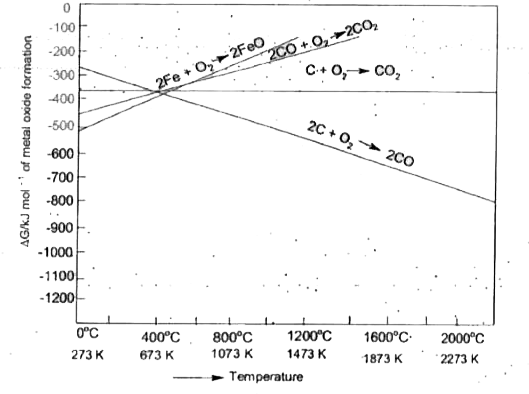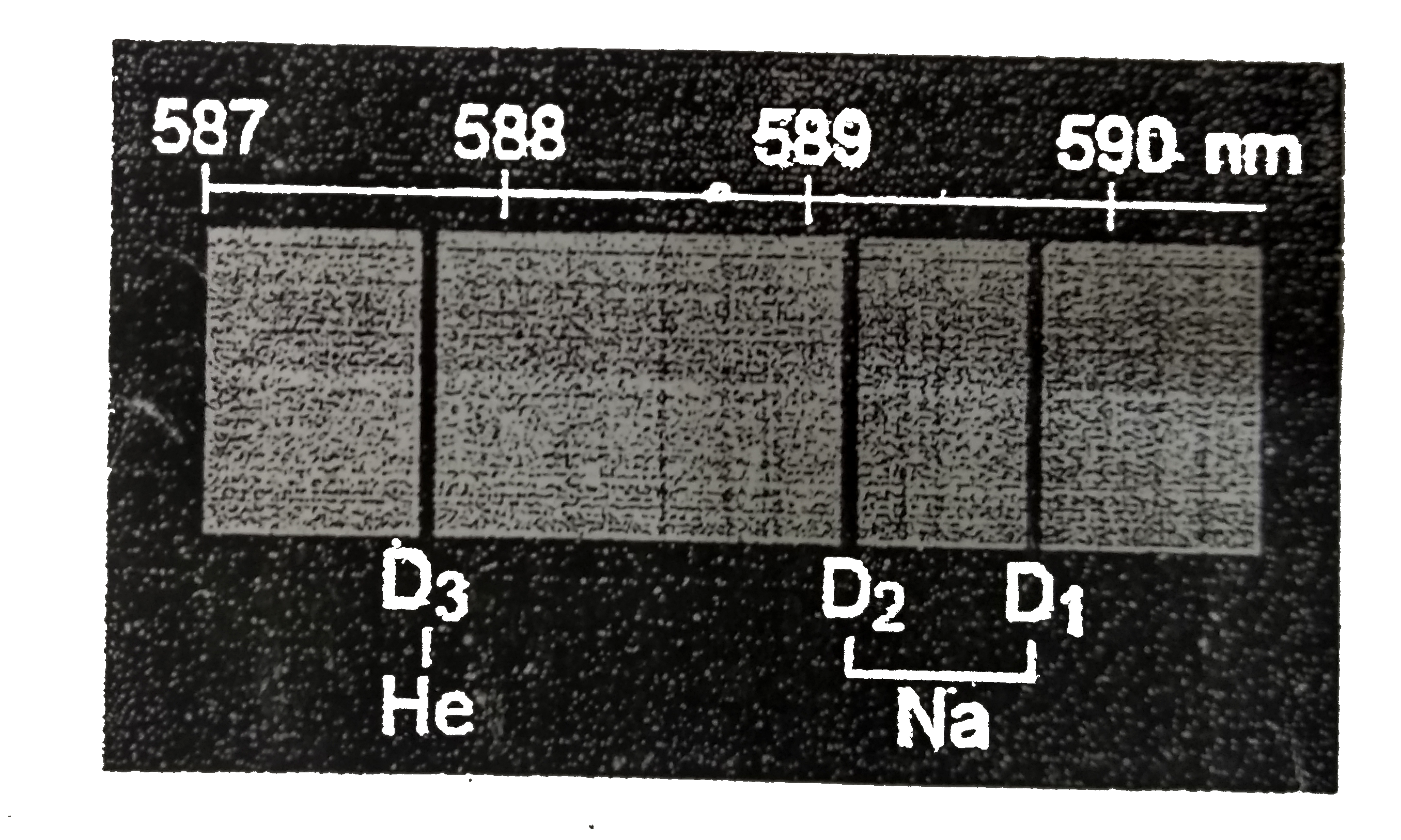The set having incorrect statement is
1. the Hall-Heroult process is used for the production of aluminum and iron
2. pig iron is obtained from cast iron.
3. the blistered appearance of copper during the metallurgical process is due to the evolution of CO2
4. leaching of bauxite using concentrated NaOH solution gives sodium aluminate and sodium silicate
1,2
2,3
1,2,3
1,2,4
The correct Answer is:C
To solve the question, we need to analyze each statement provided and determine which ones are incorrect.
1. Statement 1: "The Hall-Heroult process is used for the production of aluminum and iron."
- Analysis: The Hall-Heroult process is specifically used for the production of aluminum from alumina (Al₂O₃) through electrolysis. It does not produce iron. Therefore, this statement is incorrect.
2. Statement 2: "Pig iron is obtained from cast iron."
- Analysis: Pig iron is produced directly from the blast furnace and is the intermediate product from which cast iron is made. Cast iron is produced by melting pig iron and adding other elements. Thus, this statement is also incorrect.
3. Statement 3: "The blistered appearance of copper during the metallurgical process is due to the evolution of CO₂."
- Analysis: The blistered appearance of copper is actually due to the evolution of sulfur dioxide (SO₂) during the Bessemerization process, not carbon dioxide (CO₂). Hence, this statement is incorrect.
4. Statement 4: "Leaching of bauxite using concentrated NaOH solution gives sodium aluminate and sodium silicate."
- Analysis: This statement is correct. During the leaching of bauxite with concentrated sodium hydroxide (NaOH), sodium aluminate and sodium silicate are formed, and impurities are removed. Therefore, this statement is correct.
Conclusion:
The statements that are incorrect are 1, 2, and 3. Therefore, the set having incorrect statements is 1, 2, and 3.
Final Answer:
The set having incorrect statements is 1, 2, 3.
---
- Analysis: The Hall-Heroult process is specifically used for the production of aluminum from alumina (Al₂O₃) through electrolysis. It does not produce iron. Therefore, this statement is incorrect.
- Analysis: Pig iron is produced directly from the blast furnace and is the intermediate product from which cast iron is made. Cast iron is produced by melting pig iron and adding other elements. Thus, this statement is also incorrect.
- Analysis: The blistered appearance of copper is actually due to the evolution of sulfur dioxide (SO₂) during the Bessemerization process, not carbon dioxide (CO₂). Hence, this statement is incorrect.
- Analysis: This statement is correct. During the leaching of bauxite with concentrated sodium hydroxide (NaOH), sodium aluminate and sodium silicate are formed, and impurities are removed. Therefore, this statement is correct.
The statements that are incorrect are 1, 2, and 3. Therefore, the set having incorrect statements is 1, 2, and 3.
The set having incorrect statements is 1, 2, 3.
Similar Questions
Sodium fusion extract, obtained from aniline, on treatment with iron (II) sulphate and H2SO4 in the presence of air gives a Prussian blue precipitate. The blue colour is due to the formation of
View SolutionDescrible the principal controlling each of the following processes:
(i) Preparation of cast iron from pig iron.
(ii) Preparation of pure alumina (Al2O3) form bauxite ore.
View Solution
Knowledge Check
Consider the following statements :
S1: In extration of iron from haematite ore, the reduction reactions take place only in the lower temperature range in the blast furnace.
S2: Calamine in an carbonate ore of zince.
S3: The principle ore of aluminium , bauxite , usually contains silica, iron oxides and titanium oxide as impurities.
S4: Solidified copper obtained from silica lined conventor ( Bessemer converter ) has blistered appearance due to the evolution of SO2.
Which are correct statements?AI and IIBII and IIICI and IIIDII, III and IV
Alkali metals oxide are obtained by combustion of the metals.Although Na normally gives Na2O2,it will take up further oxygen at elevated pressure and temperature to form NaO2.The per and superoxides of the heavier alkalies can also be prepared by passing stoichiometric amounts of oxygen into their solution in liquid ammonia.
The different alkali metal oxides can be distinguished by reaction with water.The superoxides reacts with CO2 and give oxygen gas.The stability of per and superoxides is based upon that larger cation can stablise larger anion, due to larger lattice energy.
Alkali metals dissolve in liquid ammonia.Dilute solutions are dark blue in colour but as the concentration increases above 3M, the colour changes to copper bronze and the solution acquires the metallic lusture due to the formation of metal ions clusters.The solutions of alkali metals in liquid ammonia are good conductors of electricity due to the presence of ammoniated cations and ammoniated electrons.However, the conductivity decreases as the concentrations increases, since ammoniated electrons and ammoniated cation associate.
Solution of sodium metals in liquid ammonia is strongly reducing
due to the presence of :
View SolutionAlkali metals oxide are obtained by combustion of the metals.Although Na normally gives Na2O2,it will take up further oxygen at elevated pressure and temperature to form NaO2.The per and superoxides of the heavier alkalies can also be prepared by passing stoichiometric amounts of oxygen into their solution in liquid ammonia.
The different alkali metal oxides can be distinguished by reaction with water.The superoxides reacts with CO2 and give oxygen gas.The stability of per and superoxides is based upon that larger cation can stablise larger anion, due to larger lattice energy.
Alkali metals dissolve in liquid ammonia.Dilute solutions are dark blue in colour but as the concentration increases above 3M, the colour changes to copper bronze and the solution acquires the metallic lusture due to the formation of metal ions clusters.The solutions of alkali metals in liquid ammonia are good conductors of electricity due to the presence of ammoniated cations and ammoniated electrons.However, the conductivity decreases as the concentrations increases, since ammoniated electrons and ammoniated cation associate.
On dissolving smaller (less than 3M) amount of sodium metal in
liquid ammonia at low temperature , which one of the following
does not occur ?
View SolutionAlkali metals oxide are obtained by combustion of the metals.Although Na normally gives Na2O2,it will take up further oxygen at elevated pressure and temperature to form NaO2.The per and superoxides of the heavier alkalies can also be prepared by passing stoichiometric amounts of oxygen into their solution in liquid ammonia.
The different alkali metal oxides can be distinguished by reaction with water.The superoxides reacts with CO2 and give oxygen gas.The stability of per and superoxides is based upon that larger cation can stablise larger anion, due to larger lattice energy.
Alkali metals dissolve in liquid ammonia.Dilute solutions are dark blue in colour but as the concentration increases above 3M, the colour changes to copper bronze and the solution acquires the metallic lusture due to the formation of metal ions clusters.The solutions of alkali metals in liquid ammonia are good conductors of electricity due to the presence of ammoniated cations and ammoniated electrons.However, the conductivity decreases as the concentrations increases, since ammoniated electrons and ammoniated cation associate.
KO2 is used in oxygen cylinders in space and submarines
because it :
View Solution(i) Name the method of refining of metals such as Germanium.
(ii) In the extraction of Al, impure Al2O3 is dissolved in conc. NaOH to form sodium aluminate and leaving impurities behind. What is the name of this process?
(iii) What is the role of coke in the extraction of iron from its oxides?
View SolutionConsider the following metallurgical processes :
(I) Electrolysis of molten mixiure of about 40% metal chloride and 60% calcium chloride
(II) Heating the impure metal with l2 at around 523 K to from metal iodide and their subsequent decomposition at higher temperature to yield pure metal
(III) Heating the sulphide ore in the presence of air untill a part of it is converted to its oxide and the further heating the oxide in the absence of air with metal sulphide to produce metal
The process used for obtaining titanium sodium and copper repsectively are
View SolutionMetals are extracted from their ores by a wide variety of techniques. The most common ores are oxides. Most metals are obtained by direct treatment of theirs ores with chemical agents, but the extraction of certain others require electrolysis. An example of the former type of process is the extraction of iron from its oxide, described by the following equation :
Fe2O3+3C→2Fe+3CO
The relative ease of extraction of a metal from its oxide can be estimated using the Ellingham diagram, as shown in the figure.
The diagram plots the free energies of formation of various oxides per mole of consumed oxygen as a function of absolute temperature.

Which of the following best explains why the free energy of formation of Fe2O3 becomes less negative as the temperature is increased.
View SolutionIn 1894, Lord Rayleigh reported that the mass of chemically prepared nitrogen was different from that of nitrogen extracted from the atmosphere, as shown in Tables 1 and 2. Latter, this difference was attributed to the presence of argon in atmospheric nitrogen. The masses of gases were mearsured by using a glass vessel with a known volume under atmospheric pressure (1.013×105Pa).
∣∣ ∣ ∣ ∣ ∣ ∣ ∣∣From nitric oxide2.3001gFrom nitrous oxide2.2990gFrom amonium nitrite purified at a red heat2.2987gFrom urea2.2985gFrom ammonium nitrite purified in the cold2.2987gMean2.2990g∣∣ ∣ ∣ ∣ ∣ ∣ ∣∣
∣∣ ∣ ∣ ∣∣O2was removed by hot copper(1892)2.3103gO2was removed by hot iron(1893)2.3100gO2wasremovedbyferroushydrate(1894)2.3102gMean2.3102g∣∣ ∣ ∣ ∣∣
Ramsay and cleve discovered helium in cleveite (a mineral consiting of uranium oxide and oxides of lead, thorium, and rare earths, an impure variety of uraninite) independently and virtually simultaneously in 1895. The gas extracted from the rock showed a unique spectroscopic line at around 588 nm (indicated by D3 in Figure 1), which was fist observed in the spectrum of solar prominence during a total eclipse in 1868, near the well-known D1 and D2 lines of sodium.

Identify––––––––– the transition relevant to the D3 line of helium among the transitions [A] to [E] indicated in Figure 2. Mark one of the following:
[A] [B] [C] [D] [E]
View Solution
